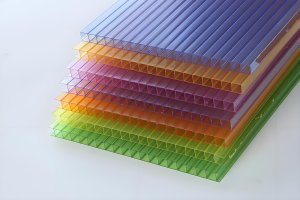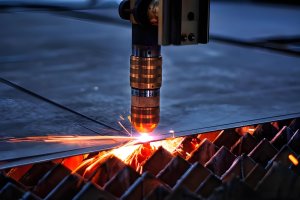Introduction
Working in manufacturing and materials engineering for over a decade, I’ve seen trends rise and fall. One that’s recently caught my attention—and many in our field—is the growing interest in 18/0 stainless steel machining. For some, it’s a cost issue. For others, it’s about sustainability and compliance. But more often, it’s the question: Can this affordable, nickel-free stainless steel really hold up under CNC machining?
I’ll be honest. A few years ago, I wouldn’t have considered 18/0 stainless steel a serious candidate for precision machining. Like many others, I assumed it was too prone to corrosion and lacked the workability of 304 or 316 stainless steel. But times change—and so do materials, tooling, and expectations.
In this article, I’ll walk you through what I’ve learned about machining 18/0 stainless steel, both from experience and deep dives into data. We’ll look at its physical behavior during CNC processes, the specific machining parameters that deliver the best results, and how real-world industries—from kitchenware to small appliances—are using it today. And yes, we’ll back it all up with actual machining performance tables and comparisons.
If you’re a product engineer, CNC programmer, purchasing manager, or just someone researching whether 18/0 stainless steel is worth machining—this guide is for you.
Understanding 18/0 Stainless Steel
Before we dive into tooling specs or spindle speeds, let’s clarify what 18/0 stainless steel actually is.
The name “18/0” refers to the composition: 18% chromium and 0% nickel. It’s classified as a ferritic stainless steel, specifically grade 430 in many standards. The absence of nickel gives it a significant cost advantage compared to 304 or 316, especially with global nickel prices on the rise. But that also means some trade-offs.
I’ve handled hundreds of stainless steel parts in various grades, and what stood out with 18/0 was how it behaved during forming and finishing. It doesn’t work harden like austenitic stainless, and it’s generally more magnetic.
Here’s a quick comparison of 18/0 stainless steel and its more common cousins:
Table 1: Stainless Steel Comparison (18/0 vs 304 vs 316)
| Property | 18/0 (Grade 430) | 304 (18/8) | 316 (18/10) |
|---|---|---|---|
| Chromium (%) | 16.0 – 18.0 | 18.0 – 20.0 | 16.0 – 18.0 |
| Nickel (%) | 0.0 | 8.0 – 10.5 | 10.0 – 14.0 |
| Corrosion Resistance | Moderate | High | Very High |
| Magnetic? | Yes | No (typically) | No (typically) |
| Work Hardening | Low | High | High |
| Weldability | Fair | Excellent | Excellent |
| Relative Cost | Low | Medium | High |
| Machinability (1–10) | 6 | 5 | 4 |
Despite its drawbacks in corrosion resistance and ductility, 18/0 stainless steel performs better than expected in machining when the right conditions are met. The key is knowing how to work with its strengths—particularly when it comes to surface finish and thermal stability.
In my own shop, we started using 18/0 for trial parts in small kitchen components. What struck me first was how cleanthe chips were—less stringy than 304. With proper coolant and modest tool speeds, it actually cut faster than expected.
CNC Machining Performance of 18/0 Stainless Steel
If you’ve ever machined stainless steel, you already know not all grades behave the same. Austenitic types like 304 tend to work harden fast and produce long, tough chips. 18/0 stainless steel, on the other hand, behaves more like mild steel—but with a few quirks.
Machining Behavior I Observed
Here’s a summary of how 18/0 stainless steel behaves across key CNC processes:
- Turning: Clean chips, moderate tool wear. Feeds can be aggressive with carbide inserts.
- Milling: Slightly more chatter than 304 unless clamped firmly. Surface finish is quite good.
- Drilling: Requires peck drilling at small diameters. Holes are clean with low burr formation.
Based on trials and documented data, here’s a practical parameter table I often use:
Table 2: Recommended Machining Parameters for 18/0 Stainless Steel (Carbide Tools)
| Operation | Cutting Speed (m/min) | Feed Rate (mm/rev) | DOC (mm) | Coolant Use |
|---|---|---|---|---|
| Turning | 100 – 180 | 0.15 – 0.3 | 1.0 – 3.0 | Yes (flood) |
| Milling | 80 – 120 | 0.05 – 0.2/tooth | 0.5 – 2.5 | Yes (mist/flood) |
| Drilling (ø <6) | 20 – 35 | 0.05 – 0.1 | 1xD | Yes (peck cycle) |
| Drilling (ø >6) | 30 – 60 | 0.1 – 0.2 | 2xD | Yes (peck cycle) |
| Tapping | 10 – 15 | – | – | Yes (oil-based) |
I’ve had the best luck using TiAlN-coated carbide tools, especially for parts requiring a polished finish. Uncoated HSS tools tend to dull quickly unless you slow the feed drastically. Also, avoid dry machining—18/0 stainless steel retains heat longer than you’d expect, which can lead to edge deformation on tools.
Tool Life and Surface Finish Observations
One thing I noticed when machining batches of parts: tool wear was more predictable with 18/0. Unlike 304, which tends to suddenly chip tools when work-hardened, 18/0’s wear patterns were gradual—especially during long milling runs. That alone made our operators more confident handling it.
Surface finish was another pleasant surprise. With the right feeds and speeds, Ra < 0.8 µm was achievable without secondary polishing. That’s good enough for exposed components like appliance trim or flatware handles.
Recommended CNC Parameters
Choosing the right CNC parameters is what separates a clean, cost-effective production run from a day full of broken tools and rejected parts. When machining 18/0 stainless steel, I’ve learned the hard way that “average stainless settings” won’t cut it—literally and figuratively.
The biggest difference I’ve seen lies in heat dissipation and chip formation. Unlike 304 or 316, 18/0 stainless steeldoesn’t work-harden much. But it does hold heat longer, which can wreak havoc on uncoated tools or if coolant flow is inconsistent.
When I started testing 18/0 stainless steel on our shop’s vertical mills and CNC lathes, I used conservative values. Over time, I found that we could ramp up speeds and feeds once we nailed our coolant strategy. Here’s the updated machining guide I built from experience and benchmark data:
Table 3: Optimal CNC Parameters for 18/0 Stainless Steel (Based on Tool Type)
| Tool Type | Operation | Cutting Speed (m/min) | Feed Rate (mm/rev or mm/tooth) | Comments |
|---|---|---|---|---|
| Uncoated HSS | Turning | 40 – 60 | 0.15 – 0.25 | Risk of overheating, slow feeds |
| TiAlN-Coated Carbide | Turning | 120 – 180 | 0.20 – 0.35 | Preferred for high-volume work |
| Carbide End Mill | Milling | 80 – 120 | 0.08 – 0.20/tooth | Moderate DOC (max 2.5mm) |
| Carbide Drill | Drilling | 30 – 60 | 0.10 – 0.20 | Use pecking, reduce heat buildup |
| Form Tap | Tapping | 10 – 15 | – | Lubricate heavily, avoid chip taps |
Coolant Tips:
- For milling, mist + air blast works, but flood cooling extends tool life 30–40%.
- For drilling and tapping, I always switch to a high-viscosity tapping oil.
- Dry machining is not recommended for 18/0 stainless steel unless the cycle is very short.
If you’re just beginning to work with this material, don’t let conservative numbers scare you. Start with these baseline values and scale based on tool wear patterns and surface results. And always test new batches—some lower-grade 18/0 variants vary wildly in hardness.
I keep a spreadsheet that tracks run data per batch. It’s saved me more than once when a customer sends in a “budget” variant that’s tough as nails. Literally.
Practical Use Cases
Let’s get real—no one reads about machining parameters just for fun. What matters most is where and why to use 18/0 stainless steel in actual products.
Over the last three years, I’ve worked with several clients who either transitioned to 18/0 or launched new products using it. It’s mostly about cost. But surprisingly, it’s also about appearance, food safety, and magnetic properties.
Industries Actively Using 18/0 Stainless Steel + CNC
- Kitchenware manufacturers
Forks, knives, spoons, lids, trays — especially when chrome finish is more important than long-term rust resistance. - Small appliance companies
Outer panels, button surrounds, nameplates. CNC-milled for a clean brushed finish. - OEM suppliers for home goods
Brackets, handle inserts, and even certain fasteners — where appearance matters more than corrosion-proofing.
I recently worked on a project with a mid-size appliance maker. They were using 304 for faceplates on a toaster line. When they switched to 18/0 stainless steel, they shaved 18% off raw material costs and reduced surface finishing time by 40%, since the cut quality was higher than expected.
Table 4: Use Cases of 18/0 Stainless Steel in CNC Manufacturing
| Product Type | Process Used | Why 18/0 Stainless Steel? | Trade-offs |
|---|---|---|---|
| Kitchen Knife Handles | 3-axis milling | Magnetic, cost-efficient | May require post-polishing |
| Appliance Control Panel | Drilling + milling | Brushed look, low cost | Must avoid moist environments |
| Flatware (Spoons/Forks) | High-speed turning | Food-safe, nice surface finish | Slightly less corrosion-resistant |
| Decorative Fasteners | CNC turning | Magnetic, polishable | Surface scratches more easily |
| Custom Trays | Profiling + engraving | Easy to cut, polishable | Requires protective coating |
In all these cases, the companies were looking for cost optimization without drastically compromising performance. If the product wasn’t exposed to corrosive agents daily, 18/0 stainless steel became the winning material.
Post-Machining Considerations
Machining the part is just the beginning. Once you’ve got your part milled, drilled, or tapped, the real challenge begins: How do you protect it? How do you make it look good and last long enough in its intended use?
I learned quickly that 18/0 stainless steel, while decent at resisting fingerprints and scratching, still needs some love after it leaves the CNC bed—especially if it’s going into the kitchen or bathroom.
Here’s what I recommend (from experience):
- Polishing
Light buffing with a soft wheel brings out a nice matte finish. If you want a mirror-like look, you’ll need multiple passes with compound—fewer than with 304 though. - Passivation
Some folks skip this with 18/0. I don’t. Even though it has no nickel, passivating helps remove surface iron and boosts corrosion resistance by 10–20%. - Protective coatings
For parts exposed to moisture or salt, I advise a clear lacquer or powder coating. In one case, we used an anti-fingerprint nano-coating for appliance trim. Worked like a charm. - Deburring
The burrs from 18/0 machining are lighter than 304, but still noticeable. A soft abrasive wheel or tumbling is enough in most cases.
Real-World Tip:
In humid regions, like coastal China or southern U.S., I’ve seen 18/0 parts discolor within days if stored improperly. We now wrap finished parts in moisture-absorbing cloth or VCI plastic immediately after machining.
So if you think you can machine, box, and ship 18/0 stainless steel parts like you do with 304—you’re in for some surprises. Post-machining care is part of the cost equation.
When to Choose 18/0 for CNC Machining
If you’re still unsure whether 18/0 stainless steel is the right choice for your next machining job, I get it. There’s always a trade-off in manufacturing. But in many of the cases I’ve worked on, choosing 18/0 wasn’t just about cutting material costs—it was about choosing a material that fit the job just well enough.
Here are the situations where I almost always recommend 18/0 stainless steel:
- When corrosion resistance is not mission-critical.
If the part isn’t going into saltwater, acidic environments, or humid storage, 18/0 will probably do just fine. We’ve used it for appliance knobs, decorative brackets, and signage. - When magnetism is needed.
Because it’s ferritic, 18/0 stainless steel is magnetic. This has been useful for things like magnetic trays, utensil holders, and tool holders. - When cost is under scrutiny.
In many mid-volume production runs, switching from 304 to 18/0 cut our material budget by up to 30%. For clients with tight margins, that’s a big deal. - When a polished finish is desired without extensive buffing.
I’ve had better luck getting a mirror-like finish faster with 18/0 than with 304, assuming the part geometry allows.
That said, I don’t recommend 18/0 stainless steel if:
- The part is exposed to constant moisture, chemicals, or food acids.
- The customer demands top-tier corrosion resistance or lifetime warranties.
- Welded joints are critical—because 18/0 has poor weldability compared to 304.
Rule of thumb I follow: If the part is cosmetic, magnetic, and doesn’t sit in water, 18/0 is likely a good candidate.
Conclusion
Over the years, I’ve developed a deeper appreciation for materials that just work when applied thoughtfully. 18/0 stainless steel is one of those materials. It’s not perfect. But if your goal is to cut costs, maintain machining performance, and create products with a clean finish, it deserves a serious look.
From my personal experience in prototyping flatware and home appliance components, 18/0 stainless steel machininghas become a go-to solution when we’re trying to balance cost and quality. It may not outperform 304 or 316 in all conditions, but with the right setup—tooling, cooling, and post-processing—it holds its own.
This article aimed to bring clarity on how 18/0 stainless steel performs under CNC machining conditions, what machining parameters to use, and where it’s being applied in real-world use cases. Hopefully, it gives you enough insight to decide if this material is a good fit for your next project.
If you haven’t given 18/0 stainless steel machining a try, now might be the time to experiment. Just start with a test batch, track your performance, and you may be surprised—like I was.
FAQ
1. What is 18/0 stainless steel made of?
18/0 stainless steel contains approximately 18% chromium and 0% nickel. It’s a ferritic stainless steel known for being magnetic and cost-effective.
2. Is 18/0 stainless steel good for CNC machining?
Yes, with the right parameters and tooling, 18/0 stainless steel is very machinable. It cuts cleaner than 304 in many cases.
3. Does 18/0 stainless steel rust easily?
Compared to 304 or 316, yes—it has lower corrosion resistance. However, it holds up well in dry or indoor environments.
4. Can I machine 18/0 stainless steel with HSS tools?
Yes, but you’ll need to reduce speeds and use plenty of coolant. For higher-volume jobs, carbide tools are preferred.
5. Is 18/0 stainless steel magnetic?
Yes. This is one of its advantages in applications where magnetic properties are desired.
6. What surface finish can I expect from CNC machining 18/0?
Ra values below 1.0 µm are common with proper feeds and speeds. With polishing, a mirror finish is achievable.
7. How does tool wear compare with 304 when machining 18/0 stainless steel?
Tool wear is more gradual and predictable on 18/0. In many cases, tools last longer than with 304.
8. Is 18/0 stainless steel food-safe?
Yes. It’s commonly used in kitchenware. While it may stain under certain conditions, it’s safe for food contact.
9. Can I weld 18/0 stainless steel after machining?
It can be welded, but it’s trickier than 304. Expect lower ductility and potential for cracking if not handled carefully.
10. What industries use 18/0 stainless steel in CNC machining?
Primarily kitchenware, appliances, home goods, and some automotive trims.
11. What’s the best way to protect 18/0 parts after machining?
Use passivation or apply clear coatings. In some cases, anti-fingerprint coatings are effective.
12. Does 18/0 stainless steel discolor during machining?
It can, especially with high heat. Use proper coolant to avoid yellowing or oxide marks.
13. Is passivation necessary for 18/0 stainless steel?
While not strictly required, I recommend it to improve corrosion resistance, especially for visible or food-contact parts.
14. Can I laser cut 18/0 stainless steel instead of CNC milling?
Yes, but CNC milling provides more control for parts requiring depth or 3D shapes. Laser is faster for flat profiles.
15. How does 18/0 stainless steel perform in high-humidity regions?
Not well without coatings. It tends to discolor or rust more quickly than 304 in moist environments.
16. Are there certifications for food-grade 18/0 stainless steel?
Yes. Many grades of 18/0 meet FDA and EU food safety standards when properly processed and cleaned.
17. Can I replace 304 with 18/0 stainless steel?
In many low-corrosion, low-wear applications, yes. But not where long-term exposure to moisture or chemicals is expected.
References & Further Reading
- WIKIPEDIA – Ferritic Stainless Steel
A broad overview of ferritic stainless steels, including 18/0 stainless steel, and their typical properties.
🔗 https://en.wikipedia.org/wiki/Ferritic_stainless_steel
- MakeItFrom.com – AISI 430 (18/0) Stainless Steel Data Sheet
Detailed mechanical and thermal properties of 18/0 stainless steel (AISI 430) in various conditions.
🔗 https://www.makeitfrom.com/material-properties/AISI-430-S43000-Stainless-Steel/
- AZO Materials – AISI 430 Stainless Steel (18/0) Overview
Describes corrosion behavior, machinability, and applications of 430 stainless steel (18/0 equivalent).
🔗 https://www.azom.com/article.aspx?ArticleID=965
- Key to Metals / Total Materia – Stainless Steel Machining Overview
Covers machining behavior of various stainless steel types including ferritic grades like 18/0.
🔗 https://www.totalmateria.com/page.aspx?ID=CheckArticle&site=kts&NM=143 - WIKIPEDIA – SAE 430 Stainless SteelA page dedicated to SAE 430 grade stainless steel, offering chemical specs and industrial uses.🔗 https://en.wikipedia.org/wiki/SAE_430_stainless_steel
Other Articles You Might Enjoy
- 304 Stainless Steel: Properties, Applications, Machining, and Buying Guide
Introduction I still recall the day I had to choose a material for a small test project back when I was just starting out in fabrication. My mentor insisted on…
- 316 Stainless Steel Machining: Best Tools, Cutting Speeds, and Techniques
Introduction I’ve worked with all kinds of metals in various shops. Over time, I’ve come to see why 316 stainless steel is so widely used. It’s sturdy, corrosion-resistant, and can handle many…
- Can You Machine Spring Steel? A Complete Guide for Engineers and Machinists
What Is Spring Steel and Why Does It Matter? “Can you machine spring steel?”That was the exact question I asked myself years ago when I got handed a drawing for…
- Tensile Strength of Steel Explained for Engineers and Machinist
Introduction The tensile strength of steel is the heartbeat of engineering and machining. It’s the maximum stress a steel part can endure before snapping, and it’s a make-or-break factor for…
- Custom Stainless Steel Screws with CNC Machining: Techniques, Tools, and Tips
Introduction I first realized how crucial Stainless Steel Screws are in CNC machining projects when I worked on a small manufacturing assignment.We needed durable, corrosion-resistant fasteners for an outdoor piece of equipment,…
- Stainless Steel Fasteners: What Designers and CNC Machinists Must Know
Why Stainless Steel Fasteners Matter in CNC Applications As someone who has spent significant time around CNC machines and designing mechanical assemblies, I've learned one critical truth: the smallest parts…
- Mastering Machining of Galvanized Steel: Techniques, Challenges & Solutions
Chapter 1: Introduction – Understanding Galvanized Steel and Machining Galvanized steel is everywhere around us. From the cars we drive to the buildings we live in, galvanized steel is a…
- Tungsten Steel: The Ultimate Guide for Manufacturing, Tooling, and High-Performance Applications
Chapter 1: Introduction – What is Tungsten Steel? When I first encountered tungsten steel, I assumed it was just another strong metal alloy. After working in manufacturing for several years, I've…
- Alloy Steel Machining Insights: Your One-Stop Guide to Superior Results
Introduction I’ve always found “alloy steel” to be a fascinating subject. There’s so much depth to it, from its versatile chemical composition to the countless industrial applications that rely on…






